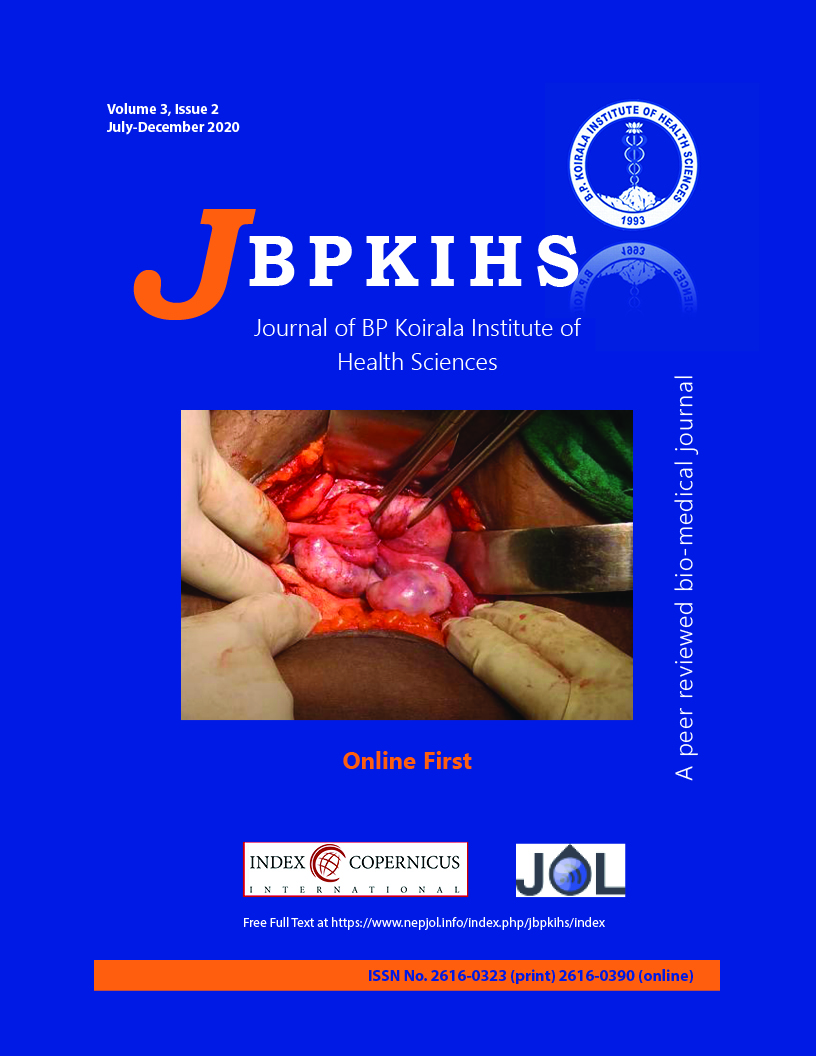Morphometric Parameters of the Proximal Femur in Nepalese Population: A Cross-sectional Study
DOI:
https://doi.org/10.3126/jbpkihs.v3i2.36085Keywords:
anatomy, measurement, proximal femur, radiographyAbstract
Background: Most of the proximal femur fractures are managed surgically by internal fiation with a variety of implants. Improperly designed or ill-fited implant may lead to a failure of fiation, breakage of implant and nonunion, thus increasing the morbidity and the cost of treatment. This study was conducted to evaluate the radiographic morphometry of the proximal femur which may be helpful in designing the implants for the Nepalese population.
Methods: In this cross-sectional study, 84 patients aged 18 years and above with traumatic unilateral hip fracture were enrolled. Anthropometric measurements were recorded. The postoperative check X-ray in the antero-posterior view of the pelvis and bilateral hip were assessed. Various morphometric parameters of the proximal femur were measured and recorded in the radiograph of the unaffcted limb using a digital caliper.
Results: Out of 84 patients, 47 were male. The mean ± SD femoral neck width, femoral neck length, femoral axis length, cervico-diaphyseal angle, acetabular tear-drop distance, and great trochanter-pubic symphysis distance were 36.10 ± 5.67 mm, 28.29 ± 4.18 mm, 104.51 ± 9.56 mm, 130.35 ± 8.67°, 32.56 ± 11.05 mm, and 163.07 ± 10.71 mm respectively. The femoral neck width was found to be signifiantly larger in males (39.08 ± 3.06 mm) than in females (32.32 ± 5.99 mm, p < 0.001).
Conclusion: This study determined the radiographic measurement of the proximal femur and found that the femoral neck width of the males was larger than that of the females.
Downloads
Downloads
Published
How to Cite
Issue
Section
License
This license enables reusers to copy and distribute the material in any medium or format in unadapted form only, for noncommercial purposes only, and only so long as attribution is given to the creator.




